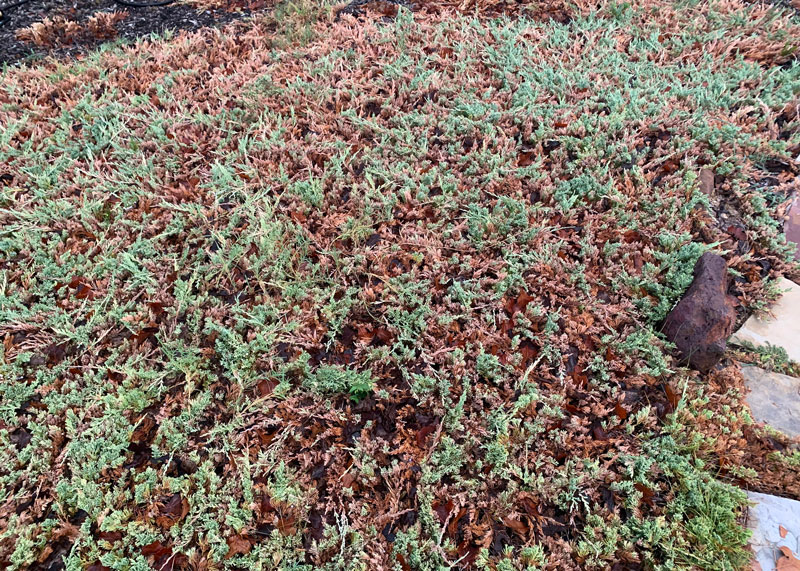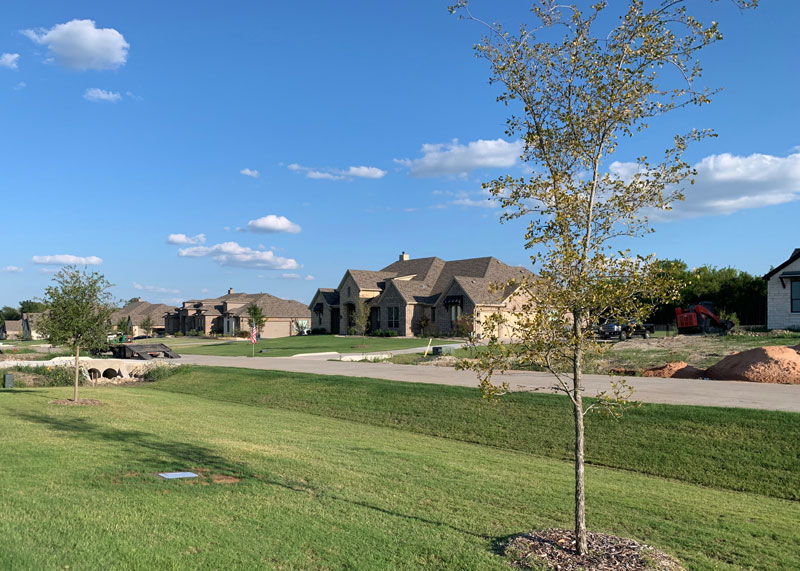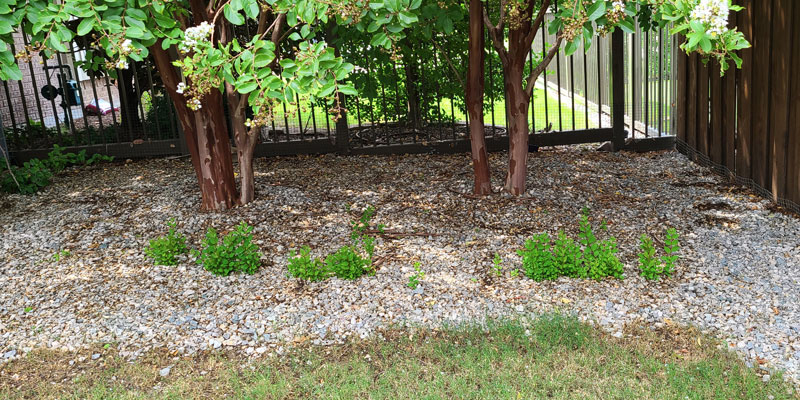Q&A – Ask Neil: September 15, 2022
(Please read these instructions carefully.)
We’ve received really nice comments on this much-expanded way of addressing questions I’m asked. Before you post your own question, I might suggest you look at recent issues to see if someone else has already asked it. You might find your answer there.
How to submit your question…
• Click here to post your question.
• After you submit your question, a new window will pop up giving you the address to which you can e-mail a photo to accompany your question. Clear, medium-resolution photos. (Try to avoid low-res thumbnail photos, please, in case I have to zoom in to see things.)
• Please only post your question one time.
• One question per reader, please.
• Please use this only for posting questions – not for standard emails.
• Watch for your answer in the following week’s e-gardens.
• I choose those of greatest general interest. For example, plant IDs seldom make the cut.
• I must have your first name or initials.
• I must have your city or county. (Texas is a very large state.)
QUESTION 1
CAN CHINQUAPIN OAK BE SAVED?
Question: What, if anything, can be done to save our chinquapin oak? Cindy R., Waco.
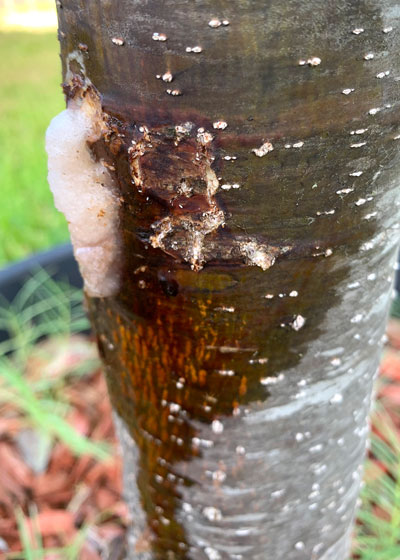

Answer: I fear there is nothing you can do at this point. The damage to the bark near the ground is sun scald that happened in the first couple of years following planting. You’ll frequently see my admonition that wrapping of oaks’ (and maples’ and pistachios’) trunks soon after planting is non-negotiable. They are suddenly taken out of side-by-side nursery protection and thrust into full-sun exposure. Thin-barked species just can’t handle it. They must all be protected with paper tree wrap from the ground up to the lowest limbs for the first two years. Without it the bark splits like a dinged windshield on a cold winter day, and borers (the hole with foam coming out) invade and tunnel through the trunk. There is nothing to be lost by waiting it out, but I’ve seen enough hundreds of trees that weren’t protected that sadly I fear your tree will succumb. I’m sorry.
QUESTION 2
WOULD SCALPING HELP THESE DRY AREAS REBOUND?
Question: I have been unable to water all my yard due to its size. I have several areas in my bermuda and St. Augustine lawn which have turned brown, I assume for lack of water. Will these areas come back? Would scalping help them recover? Derrel L., St. Paul, Collin County.

Answer: Bermuda will come back. St. Augustine is much less likely to do so unless you have a few runners that survived and that can re-populate the area. Apply a high-quality, all-nitrogen fertilizer with one-third or more of its nitrogen in slow-release form immediately. Water the lawn deeply and wait it out. If you can’t do that for such a large lawn you’ll just have to wait and see.
QUESTION 3
CAN I USE A “WINTERIZER” FERTILIZER IN THE SPRING?
Question: I have an extra bag of Winterizer 32-0-20 fertilizer. Can I use it for spring feeding? Rosemary C., Comfory.
Answer: As long as it has been stored cool and dry the fertilizer should be just fine for years. And, yes, that analysis is good at any time of the year.
QUESTION 4
WHY IS NELLIE R. STEVENS HOLLY BROWNED ON ONE SIDE?
Question: We have an established Nellie R. Stevens holly. One side is doing fine, but the other side has leaves that are pale green or browned or even missing. Why the difference? Sue B., Hood.
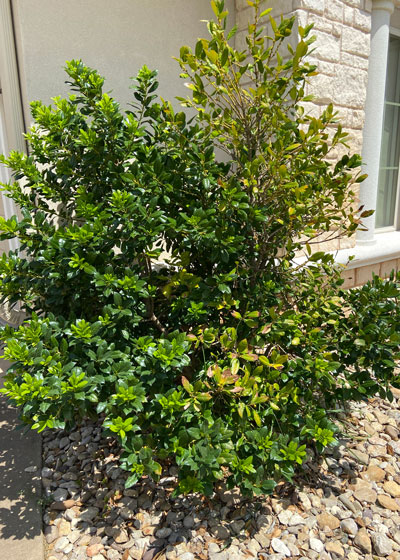

Answer: One side of the plant became too dry during the summer. Roots that provide moisture and nutrients to one side of a tree or shrub are located on that side of the plant. If that side gets very dry, the top is similarly affected. My guess is that the opposite side (the “good” side) wasn’t lagging very far behind. Given another day or two you could have lost the entire shrub. You’ll see this all across Texas on hollies, magnolias and other plants with leathery leaves. They don’t wilt, so they give little warning of pending loss. In fact, if you scroll back through the past two weeks’ questions here in e-gardens you’ll see others who have had the same problem. All you can do is trim out the dead areas and hope the plant can fill in. Be careful that both sides of the plant receive water uniformly.
QUESTION 5
HOW TO GET ‘BUBBA’ DESERT WILLOW TO THICKEN UP.
Question: My ‘Bubba’ desert willow froze to the ground 18 months ago. I cut it to the ground and got spindly new growth. How can I control the shape of the tree as it regrows? I’m concerned the limbs will snap off if the trunks grow too tall without girth. Bill R., Dallas.
Answer: Assuming you have it in full sun, which it requires, cut them back to force them to branch closer to the ground. In doing so they will also thicken up. It might also have been weakened by the cold. The plant may not have as much vigor as it needs to re-develop into a dense, durable small tree.
QUESTION 6
WHAT IS ALL OVER THIS HIBISCUS?
Question: My daughter-in-law’s hibiscus is covered with white, cream-like substance, although we see no insects. What is killing it and how can it be solved? Cindy P., San Antonio.
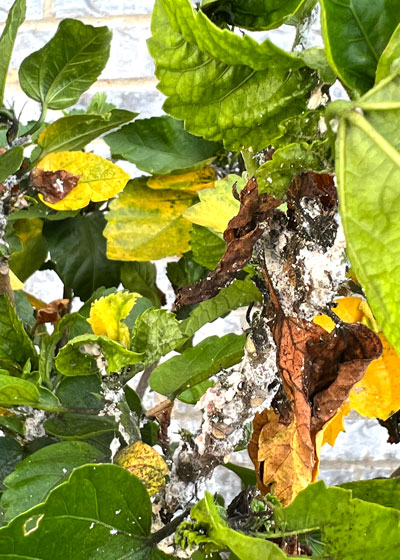
Answer: Everything you’re seeing is basically insects. The plant is caked in mealybugs. They are the nastiest, messiest of all insect pests. Usually they’re reserved for indoor plants, but occasionally you’ll see them show up on plants in the garden. They are soft-bodied scale insects that suck juices out of the plants’ stems and leaves. If you press on them with your thumbnail or with a small stick you’ll see their body fluids, proof that they’re living beings. Their white waxy coatings make it difficult to get insecticides into contact with them. The adult females also protect young mealybugs with their bodies, making control of immature ones especially difficult. It’s easiest to daub off beginning outbreaks with a cotton swab dipped in rubbing alcohol. However, she will need to resort to a labeled insecticide applied to both top and bottom leaf surfaces for such a severe infestation as this. She will have to make several treatments over several weeks. She should not take this plant indoors and put it anywhere near other “clean” plants. Personally, I would discard this plant at the end of the season. Mealybugs are that difficult to eliminate.
QUESTION 7
ARE THERE NEGATIVES TO OVERSEEDING WITH PERENNIAL RYE?
Question: You indicate in your book there are no bad results from overseeding my bermuda lawn with perennial rye to green it up over the winter. Are there any unanticipated negative things I may not have considered? Bob W., Amarillo.
Answer: You are about to get a tailor-made answer. I tell people that “perennial” ryegrass really isn’t perennial in Texas. That is a true statement. However, Amarillo, as you know very well, can be, shall we say, “cooler” than other parts of the state. You have hot summer daytimes, and that will almost assuredly kill out the ryegrass, but your cool evenings will keep it going longer into the summer than it does in other parts of Texas. It usually dies out by early or mid-May, pretty much like annual ryegrass does. And in the meantime, it’s more attractive and more easily maintained. It is also more expensive, and it’s much harder to find. I’d suggest asking landscape contractors what they think in your specific neighborhood. It may be more expedient to use annual rye and prepare to mow a little more often in the spring.
QUESTION 8
CAN THESE BLUE RUG JUNIPERS BE SAVED?
Question: We have many 9-year-old Blue Rug junipers on slopes for erosion protection, also in beds. This summer’s drought turned whole branches brown. Can we save any part of the individual junipers? Jay M., Pilot Point.
Answer: The plants themselves are going to tell you better than I can. My recommendation would be to apply an all-nitrogen, lawn-type fertilizer to them now along with a deep watering. Keep them watered during dry spells over the winter, and repeat the feeding in the first half of March. See how vigorously new growth is produced. Hopefully the plants will fill in the voids. Watch out, too, for the nearly microscopic spider mites that attack many types of junipers starting as early as February.
QUESTION 9
WHEN CAN WATER BASINS BE REMOVED?
Question: We moved into a new house one year ago. The builder planted a live oak and cedar elm in the front yard. I just removed the straps, but I’m not sure when to remove the water basins. Kevin A., Van Alstyne.
Answer: I like your builder a lot! Top-quality trees, both in terms of species and condition. Carefully planted and maintained. (Would have liked to have seen the live oak’s trunk wrapped – see Question 1.) It looks like the trees are off to a great start. Since we’re still very warm and dry, I would be in no hurry to knock down the berms. I might even leave them there through next summer. The better you can water these trees, the more quickly they’re going to take off and grow.
QUESTION 10
CAN I USE GLYPHOSATE TO KILL SPROUTS FROM MY CRAPE MYRTLE?
Question: Nothing much grows beneath my 11-year-old crape myrtle. I covered the area with new soil and stones. Now there are new shoots from the roots of the crape myrtle. Will these hinder growth of the tree? Can I use glyphosate to kill the shoots? Fred D., Frisco.
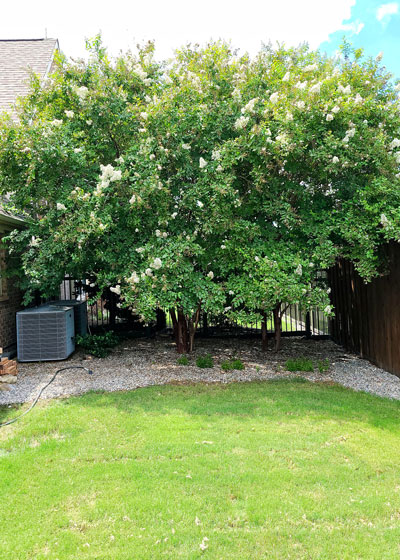
Answer: Do not apply glyphosate spray! First, it is primarily intended for use to kill grasses, not broadleafed plants like crape myrtles. Second, those shoots are tethered to the mama tree, so you don’t want to apply anything that could be carried back to it. Don’t spread soil over the roots of any tree. That runs the risk of doing harm to the tree. Even an inch or two of topsoil spread over the root system of a mature shade tree can do more damage than removing twice that much. That’s because the majority of the roots that any tree uses to take up water and nutrients are near the surface of the soil. When you cover the soil you disturb that balance. Dig those sprouts out with a sharpshooter spade.
And, for the question I wasn’t asked: If this were my bed I’d consider planting regular mondograss (not dwarf) or purple wintercreeper euonymus as a solid groundcover beneath the crape myrtles. Either would tolerate the shade very well. If I wanted color, I’d put three large (16-inch or larger) simple pots into which I could plant caladiums, begonias or other shade-tolerant options.
QUESTION 11
SHOULD WE VARY FUNGICIDES WITH AZOXYSTROBIN FOR LAWNS?
Question: You often cite Azoxystrobin for use on St. Augustine for diseases. A website that pops up often advises me to rotate between different active ingredients to prevent immunity buildups. Can you comment on this? Susy K., College Station.
Answer: We waited seemingly forever for a fungicide that university research found to be effective for control of take all root rot. Azoxystrobin was the first that was available in a consumer product. It still is the most widely sold. Others you may be seeing on that and other websites may require a commercial license for purchase and application. Alternating products is always a good idea if they are available and if they are equally effective, but fungicides for turf have been limited on consumer shelves in the past 10 or 15 years.

